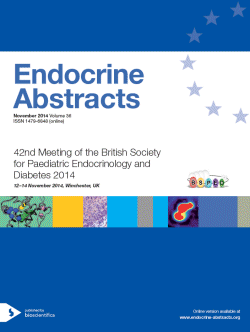Searchable abstracts of presentations at key conferences in endocrinology

42nd Meeting of the British Society for Paediatric Endocrinology and Diabetes
Contents
- Speaker Abstracts
-
- CME Session
-
-
ea0036cme1
-
ea0036cme2
-
ea0036cme5
-
ea0036cme6
-
- Main Symposia
-
- Plenary Guest Lecture
-
-
ea0036pl1
-
- Symposia 1 Controversies in Vitamin D deficiency
-
- Symposia 2 Recent advances in adrenal disease
-
-
ea0036s2.2
- Symposia 3 New developments from trials in TIDM
-
- Debate: Children with diabetes should be managed centrally
-
- Diabetes Professionals Session
-
-
ea0036dp1
-
ea0036dp2
-
ea0036dp5
-
ea0036dp7
-
- Endocrine Nurse Session
-
-
ea0036en1
-
ea0036en4
-
ea0036en5
-
- Oral Communications
- Poster Presentations
-
- (1)
-
-
ea0036P25
-
ea0036P47
-
ea0036P79



